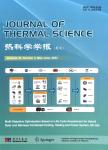Influence of Biomass Co-combustion on Heating Surfaces Thermal Efficiency
Influence of Biomass Co-combustion on Heating Surfaces Thermal Efficiency作者机构:Institute of Thermal Power Engineering Cracow University of Technology31-864 Kraków Poland European Institute for Energy Research 76131 Karlsruhe Germany
出 版 物:《Journal of Thermal Science》 (热科学学报(英文版))
年 卷 期:2018年第27卷第5期
页 面:427-432页
核心收录:
学科分类:0710[理学-生物学] 080703[工学-动力机械及工程] 07[理学] 08[工学] 0807[工学-动力工程及工程热物理] 09[农学] 0805[工学-材料科学与工程(可授工学、理学学位)] 0702[理学-物理学]
主 题:biomass co-combustion ash deposit coefficient of thermal efficiency
摘 要:Pulverized coal-fired(PCF) boilers were first and foremost intended to fire pulverized hard or brown coal. However, biomass co-firing has become a fairly common practice in the Polish power generation system and many existing boilers have been modernized to serve this purpose. This paper presents calculations of the coefficient of thermal efficiency of the boiler heating surfaces and of the time needed for complete reconstruction of deposits on the second-stage steam reheater(RHII) of an OP-380 boiler with the output of 380×10~3 kg/h. The boiler was equipped with a purpose-designed installation of direct feeding of biomass. The main co-fired fuels were wood and sunflower husk pellets. Intense formation of deposits on the steam reheater tubes and problems related to a reduction in the diameters of the tubes were identified during the power unit operation.



